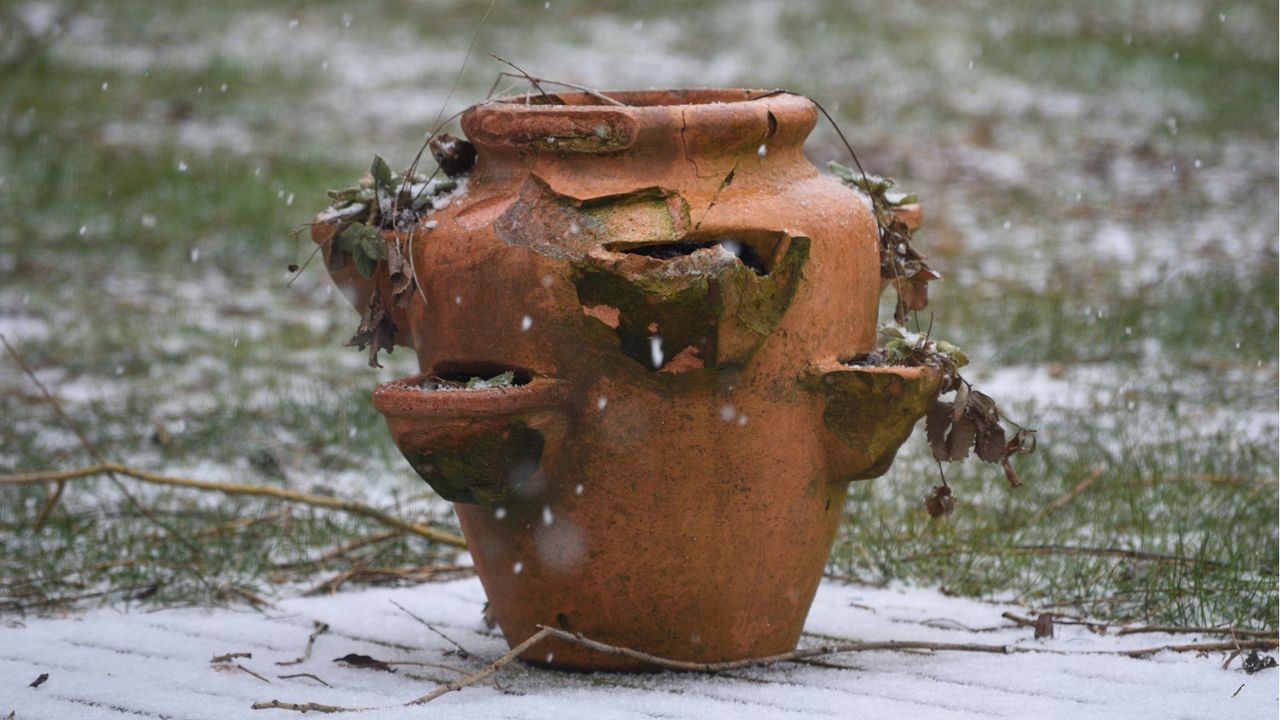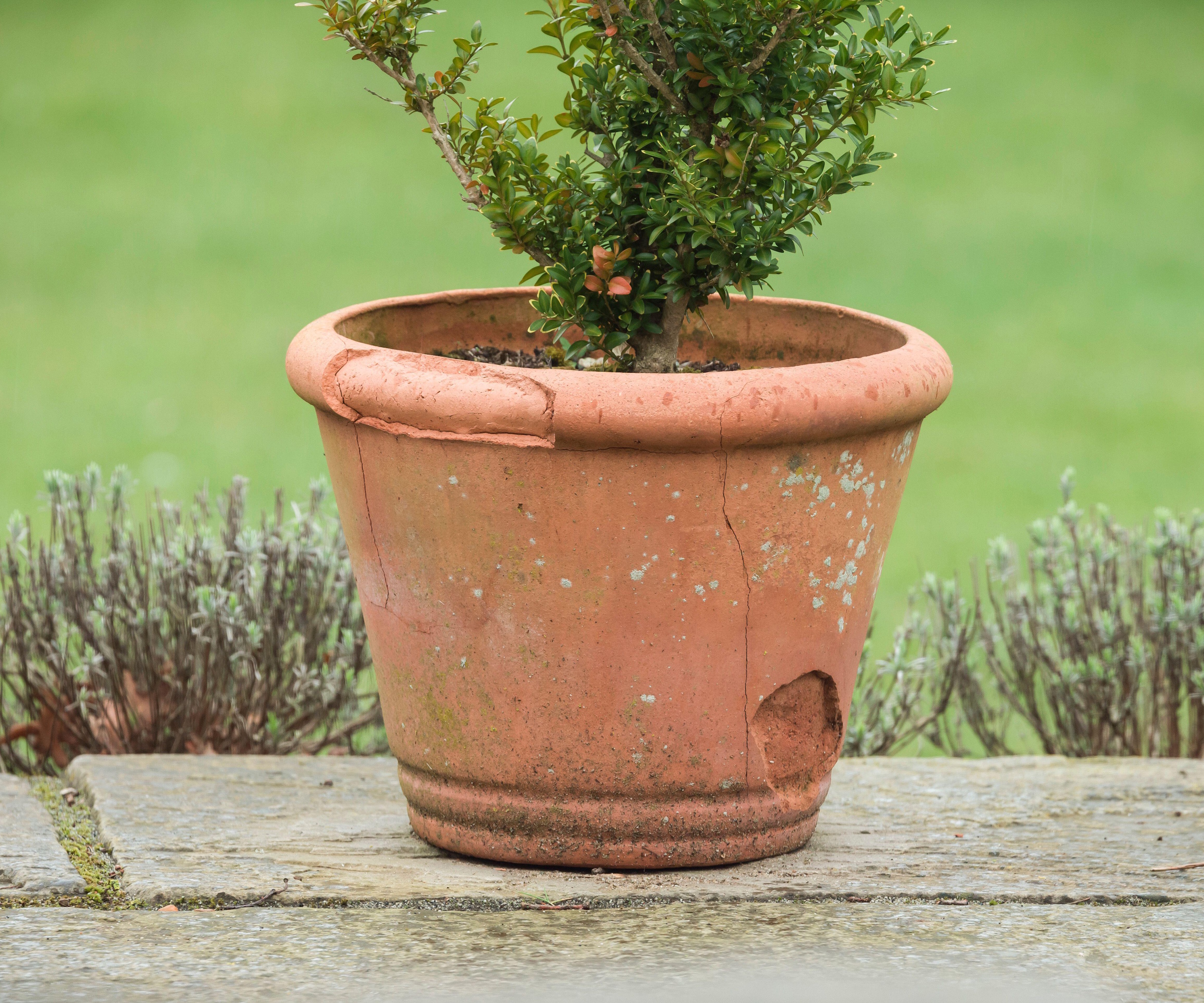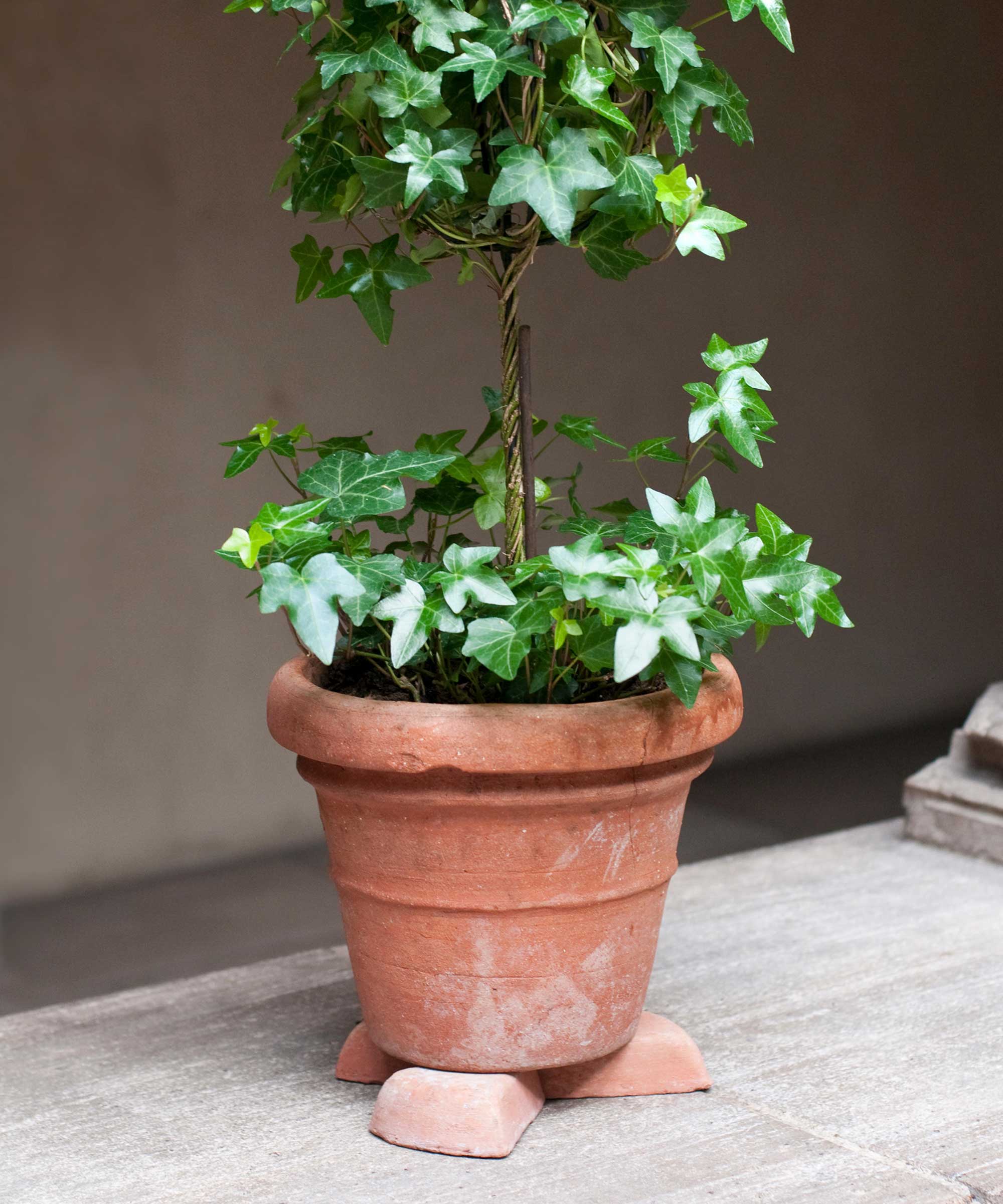
I've collected quite a few terracotta pots this year, as I worked on extending my container garden. Now that we've reached fall, I'm left wondering how best to protect them to avoid any damage from frost. Luckily, just a few simple tricks can help protect pots and planters from frost, so they make it through to spring unscathed.
If you also have a container garden full of precious pots and planters, it's wise to take some measures to ensure freezing temperatures don't crack and shatter them. Of course, it's likewise important to protect container plants from winter weather, but neglecting the vessel itself can result in damage that harms both pot and plant.
Here, I've outlined three easy, reliable, and affordable ways to protect pots and planters from frost.

3 Ways to Protect Pots and Planters From Frost
You'll find that certain types of pots and planters are more resilient to frost than others. However, if you have clay or ceramic pots, these tend to be the most susceptible to damage. This is often because the pots absorb water which expands, freezes, and cracks the pots. Likewise, those with narrow necks may crack when soil on the inside freezes. The below methods to protect pots and planters from frost will help prevent damage over the winter season:
1. Elevate Pots Above Cold Surfaces

This is the first thing I do when protecting pots and planters from frost. By simply lifting them off the ground, you reduce the likelihood of them cracking.
There are a few reasons for this. Hard, cold surfaces, like slabs on a patio, tend to draw heat away from pots. Plus, the pot sitting directly on a cold surface creates an airtight environment, making it easier for moisture to become trapped inside the pot.
When moisture in the pot and soil expands and freezes, it can cause the planter to crack.
But using something like pot feet (from Amazon) stops this from happening – a key tool to put at the bottom of a planter for drainage.
Elevating your pots and planters above cold surfaces also allows for more air circulation (so long as they have the all-important drainage holes). In turn, this aids moisture and temperature management.
You can also use bricks and unused tiles to lift your pots. Just make sure the drainage hole is not covered.
2. Wrap Pots for Insulation

The key to protecting pots and planters from frost is providing sufficient insulation, and wrapping potted plants for winter is an easy way to do this.
You can use a range of materials for this, including burlap, bubble wrap (available at Walmart), and frost cloths (available on Amazon).
Wrapping the pot will trap heat, preventing rapid temperature changes like freezing and thawing, which can cause cracking and breaking.
Not only this, but it can prevent excess moisture from being absorbed by porous pots and planters, reducing the risk of moisture expansion and freezing.
3. Move Them Somewhere Warm

This method to protect pots and planters from frost doesn't require any extra tools. All you need to do is locate a warmer environment for your pots to live during the winter season.
You can opt to place containers in a garage if you don't have any plants growing in them over winter, or move them to a greenhouse for winter, providing a warmer environment to help your potted plants get through the coldest months. For smaller pots, a cold frame (like this cold frame from Amazon) will also provide frost protection.
If, like me, you don't have suitable space to bring pots indoors, you can opt for placing pots and planters up against a house wall. The heat given off by the wall will provide some extra warmth.
FAQs
How Can I Repurpose a Cracked Terracotta Pot?
If you have a cracked terracotta pot (often damaged from frosty temperatures over winter), don't be too quick to discard it. There are plenty of ways to reuse old planters in the garden. For example, you can use broken pieces of clay pots for slug control, or use them in a rock garden. You can also turn them upside down to create a bee watering station.
Fall and winter are great times to stock up on new pots and planters for your garden, too. Below are some of our top picks of the best large planters and pots for a container garden refresh next year:
This rustic terracotta urn would look wonderfully elegant planted with ferns, hostas, and other glossy-leaved plants. It measures 20.9”x19.7”.







